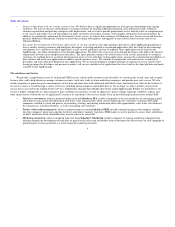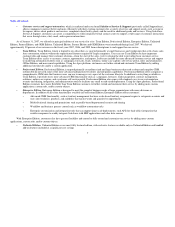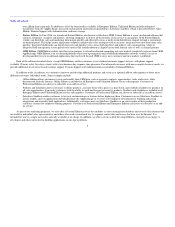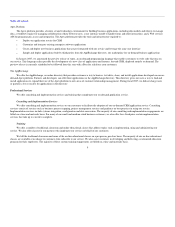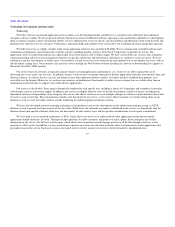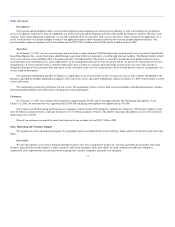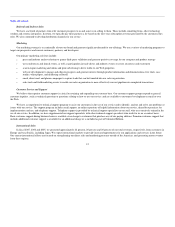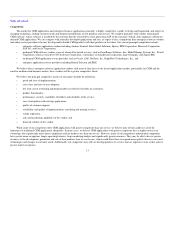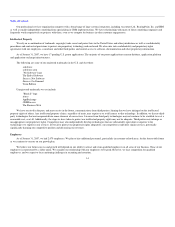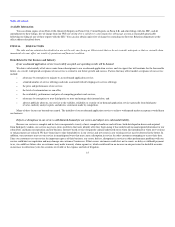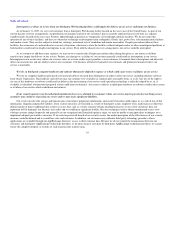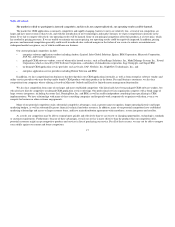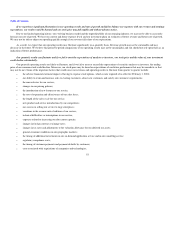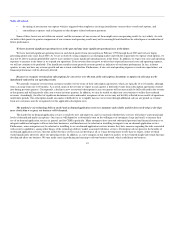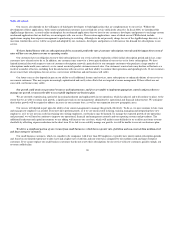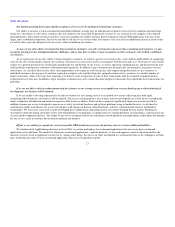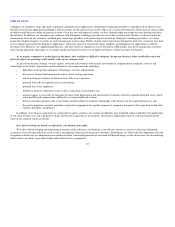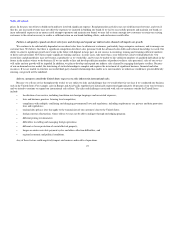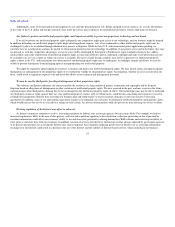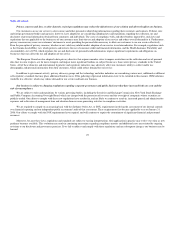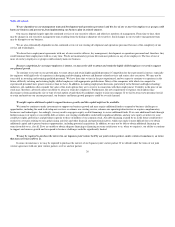Salesforce.com 2006 Annual Report Download - page 19
Download and view the complete annual report
Please find page 19 of the 2006 Salesforce.com annual report below. You can navigate through the pages in the report by either clicking on the pages listed below, or by using the keyword search tool below to find specific information within the annual report.
Table of Contents
Interruptions or delays in service from our third-party Web hosting facilities could impair the delivery of our service and harm our business.
As of January 31, 2007, we serve our customers from a third-party Web hosting facility located on the west coast of the United States. As part of our
current disaster recovery arrangements, our production environment and all of our customers' data is currently replicated in near real-time in a separate
standby facility located on the east coast. Features added through acquisition are temporarily served through alternate facilities. We do not control the
operation of any of these facilities, and they are vulnerable to damage or interruption from earthquakes, floods, fires, power loss, telecommunications failures
and similar events. They are also subject to break-ins, sabotage, intentional acts of vandalism and similar misconduct. Despite precautions taken at these
facilities, the occurrence of a natural disaster or an act of terrorism, a decision to close the facilities without adequate notice or other unanticipated problems at
both facilities could result in lengthy interruptions in our service. Even with the disaster recovery arrangements, our service could be interrupted.
As we continue to add data center capacity, we may move or transfer data. Despite precautions taken during this process, any unsuccessful data
transfers may impair the delivery of our service. Further, any damage to, or failure of, our systems generally could result in interruptions in our service.
Interruptions in our service may reduce our revenue, cause us to issue credits or pay penalties, cause customers to terminate their subscriptions and adversely
affect our renewal rates and our ability to attract new customers. Our business will also be harmed if our customers and potential customers believe our
service is unreliable.
We rely on third-party computer hardware and software that may be difficult to replace or which could cause errors or failures of our service.
We rely on computer hardware purchased or leased and software licensed from third parties in order to offer our service, including database software
from Oracle Corporation. This hardware and software may not continue to be available on commercially reasonable terms, or at all. Any loss of the right to
use any of this hardware or software could result in delays in the provisioning of our service until equivalent technology is either developed by us, or, if
available, is identified, obtained and integrated, which could harm our business. Any errors or defects in third-party hardware or software could result in errors
or a failure of our service which could harm our business.
If our security measures are breached and unauthorized access is obtained to a customer's data, our service may be perceived as not being secure,
customers may curtail or stop using our service and we may incur significant liabilities.
Our service involves the storage and transmission of customers' proprietary information, and security breaches could expose us to a risk of loss of this
information, litigation and possible liability. If our security measures are breached as a result of third-party action, employee error, malfeasance or otherwise,
during transfer of data to additional data centers or at any time, and, as a result, someone obtains unauthorized access to one of our customers' data, our
reputation will be damaged, our business may suffer and we could incur significant liability. Because techniques used to obtain unauthorized access or to
sabotage systems change frequently and generally are not recognized until launched against a target, we may be unable to anticipate these techniques or to
implement adequate preventative measures. If an actual or perceived breach of our security occurs, the market perception of the effectiveness of our security
measures could be harmed and we could lose sales and customers. In addition, our customers may authorize third party technology providers, whose
applications are available through our AppExchange directory, access to their customer data. Because we do not control the transmissions between our
customers and third-party AppExchange technology providers, or the processing of such data by third-party AppExchange technology providers, we cannot
ensure the complete integrity or security of such transmissions or processing.
16


